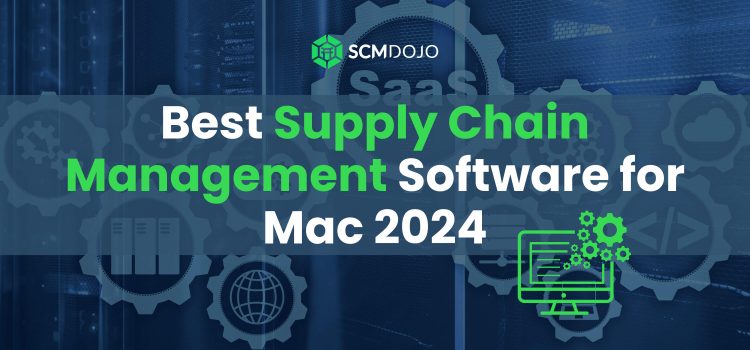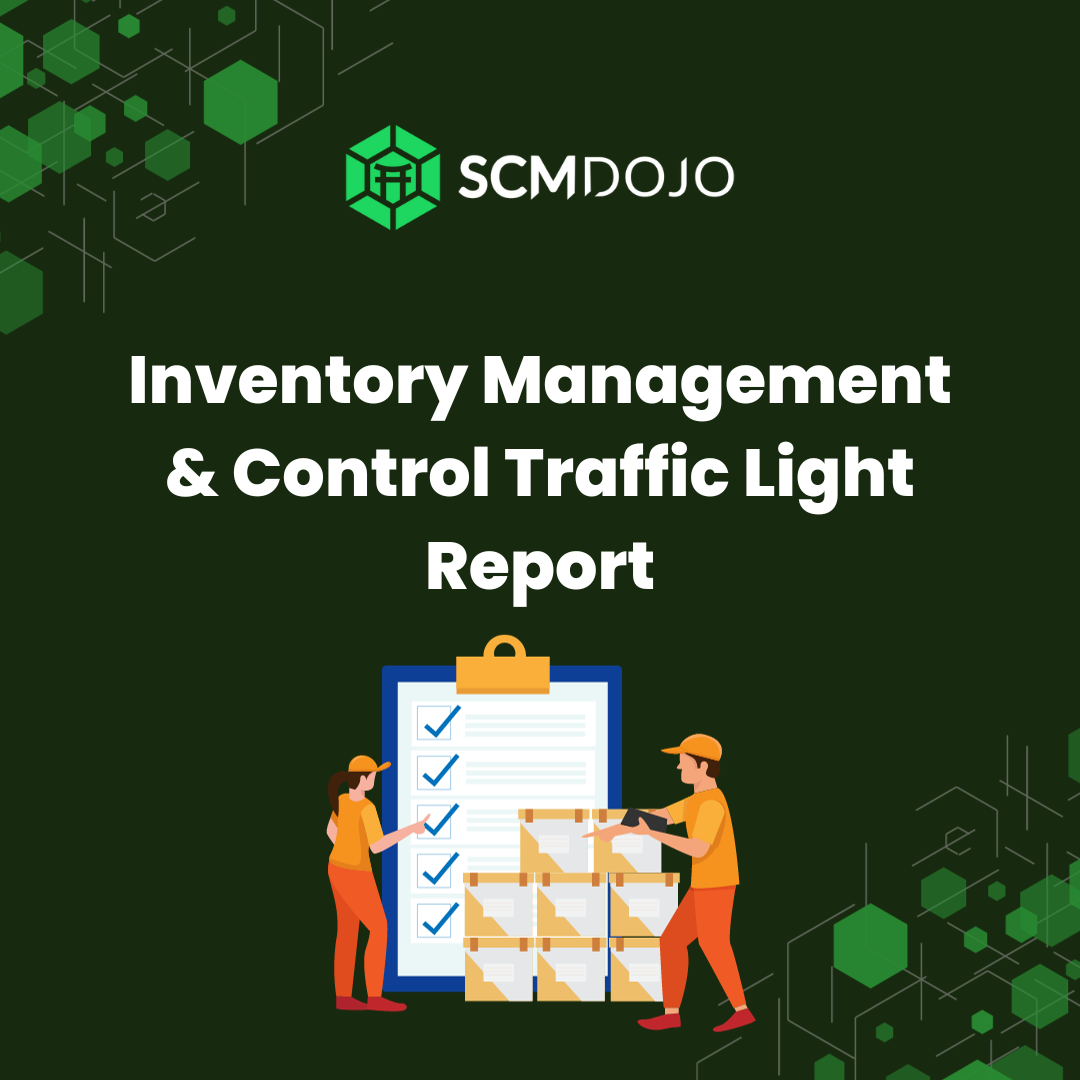The world of supply chain management is fast-paced. Hence, leveraging the right technological tools becomes not only beneficial. It is also a means to maintain a competitive edge and operational excellence. For those who use a Mac as their trusted companion in 2024, the hunt ends here.
This comprehensive guide highlights software that stands out. However, it goes beyond mere listings. For each recommended software, we will delve into the key features that set it apart. Hence, regardless of your specific aim, this article will shed light on the top software you need.
Performance for Supply Chain Management Software on Mac
Have you ever run sophisticated supply chain management software on Mac? Well, when you do, you need it to perform at its best. Hence, you should focus on an overlooked aspect of maximizing efficiency. That is the regular maintenance of your computer. However, to ensure your Mac remains clean, fast, and efficient, the solution is a Mac cleaner. This is where CleanMyMac.com steps in. As an all-in-one package, it cleans megatons of junk and makes everything run faster. This tool is particularly relevant for professionals who rely on their Macs to run heavy-duty software.
In a gist, maintaining your Mac’s health is just as important as choosing the right software. Hence, by utilizing the tool above, you can perform routine maintenance. Doing so ensures all your software runs efficiently and smoothly. Such a tool is vital for your computer to remain in optimal condition. If you do so, you can leverage the full abilities of your software solutions.
Criteria for Selecting Software for Mac
When you are looking for software for Mac, it is important to address how such software is chosen. Hence, this section dives into how we select and evaluate each supply chain management software. We ensure that the solutions recommended are well-suited for your Mac in 2024.
Compatibility and Integration with MacOS
The first criterion is how well the tool integrates within the natural ecosystem of MacBooks, which is the macOS. We ensure that the chosen software offers a seamless user experience. It should do so without the need for additional emulation software or workarounds. This includes native support for macOS and optimizing its latest features and security protocols. Moreover, you should always look into how it integrates with other Mac apps. Examples include a Calendar for scheduling or Reminders for task management.
Key Features and Functionalities
As for this criterion, it focuses on the core functionalities necessary. That includes inventory tracking, order management, demand forecasting, and logistics planning. You should also look into some potential advanced features. That could include AI-driven analytics, real-time tracking, and integration with loT devices. These often offer a competitive edge for businesses.
User Interface and Experience
At first glance, everything boils down to the design and usability, which can make it or break it. This includes having an intuitive interface and the availability of customizable dashboards. A good user experience enhances adoption rates among staff. It also reduces the learning curve and impacts the overall efficiency.
Pricing and Subscription Models
The process of selecting the right software for your company can be tedious and long. That’s because it often involves a lot of considerations and criteria. However, another impactful factor is the affordability and flexibility in pricing. The software should offer transparent pricing models that cater to different sizes and types of businesses. This includes evaluating the cost-effectiveness of subscription plans. Also, freemiums are favored, allowing you to test the software before committing financially.
Top Supply Chain Management Software for Mac in 2024
There is no doubt that supply chain management plays an impactful and non-negligible role in marketing. However, to streamline your process, you need software supply chain management. Now, this section will discuss our top choices. We also present the reasons why we believe they should be at the top of your consideration list.
#1 Anaplan
Anaplan is a cloud-based, connected planning software. It changes business performance by connecting real-time data within an organization. It is designed for fast-growing companies seeking to improve their decision-making process. With its powerful in-memory engine, Hyperblock, Anaplan supports detailed and complex planning models.
- Pricing: Contact the company for specific pricing.
- Pros: High flexibility and scalability. It also supports complex planning models.
- Cons: Regarded to have a steep learning curve for new users.
- Reviews: Users praise its real-time data connectivity and comprehensive planning capabilities.
#2 Magaya Supply Chain
Another logistics and supply chain management tool is the Magaya Supply Chain. It encompasses a wide range of features from freight forwarding to brokerage. Its advanced Warehouse Management System integrates with major online sales channels. Hence, it provides seamless eCommerce operations. It is also modular. Hence, it allows for scalability and flexibility to adapt to changing business needs.
- Pricing: Starts at $210 per user per month.
- Pros: Comprehensive features set covering a wide range of logistics needs.
- Cons: Pricing is steep for small businesses.
- Reviews: Values for its extensive functionalities in logistics and supply chain operations.
#3 Precoro
Precoro simplifies procurement processes for small to medium-sized businesses. It integrates with Xero, QuickBooks, and Netsuite. Hence, it offers an accessible and streamlined procurement solution. It is a supply chain management software for small businesses. It caters to those wanting to eliminate manual work and control their purchases.
- Pricing: Starts at $35 per user per month.
- Pros: Easy integration with popular accounting software and is very user-friendly.
- Cons: It is more focused on procurement. Hence, it makes it limited to broader supply chain needs.
- Reviews: It is appreciated for its ease of use and effective procurement management.
#4 NetSuite
NetSuite is a tool owned by Oracle and runs on the Oracle SCM Cloud platform. It is an enterprise supply chain software suite. It focuses on predictive analytics for market demand forecasting and inventory management. It is part of NetSuite’s ERP software suite. That includes comprehensive tools for enterprise resource planning (ERP). All those make it a powerful solution for businesses. That’s true, especially for those seeking ERP and SCM capabilities. It is often utilized by larger organizations that are looking for a scalable system.
- Pricing: Annual licensing fees vary based on features and number of users.
- Pros: Robust analytics and ERP integration.
- Cons: Cost can be high due to annual licensing and the need for additional features.
- Reviews: Renowned for its comprehensive ERP and supply chain management solutions.
#5 FreightPOP
FreightPOP offers a specialized solution for businesses with extensive freight shipping needs. It integrates with tracking software from major shipping companies. Hence, it provides features for transportation management, freight planning, freight auditing, and analytics. This software is designed for companies.
- Pricing: Contact the company for specific pricing.
- Pros: Comprehensive solution for freight shipping needs.
- Cons: Focused on freight. It might not suit businesses looking for a more all-encompassing SCM tool.
- Reviews: Its freight shipping abilities are loved by businesses with heavy shipping.
#6 Shippabo
This one is ranked by Forbes as the best overall supply chain management software. Shippabo focuses on ocean freight deliveries. Hence, it provides services that simplify the process of importing goods. It is designed for businesses that rely heavily on importing pre-assembled items. Its services are tailored to ease the complexities. It offers streamlined importing operations and ensures smooth, efficient delivery of goods overseas.
- Pricing: You can view their fee schedule on their website.
- Pros: Specialized in ocean freight with comprehensive import management features.
- Cons: It may not cater to businesses needing broader supply chain management functionalities.
- Reviews: Many praise it for its niche focus. It is regarded as an advantageous aspect for businesses reliant on ocean freight.
#7 Logility
Logility stands out. That’s for its extensive use of artificial intelligence in supply chain features. That covers total lifecycle planning, traceability, and assortment planning. It excels in demand forecasting. It has features such as demand sensing, casual forecasting, and proportional profile planning. The software integrates with loT, AI, automation, and workflows. However, keep in mind that it is better suited for larger companies and enterprises.
- Pricing: Contact the company for specific pricing.
- Pros: It leverages AI and loT to enhance supply chain management processes.
- Cons: The primary limitation is its apparent focus on larger organizations. It also lacks profile customization for different seasons without an additional module.
- Reviews: It is known for its detailed forecast management and user-friendly interface.
Conclusion
This article serves as your comprehensive guide. You can learn about the top global supply chain management software for Mac users in 2024. We discussed how our selection process is conducted and how you can conduct it. We also featured tools like Anaplan, Precoro, and Shippabo, among others.
Each software is evaluated for its unique features. Those also include its integration capabilities, user experience, and pricing models. Those tools allow you to optimize procurement processes or streamline inventory management. It aims to equip you with the knowledge to select the adequate software that best suits your needs.



